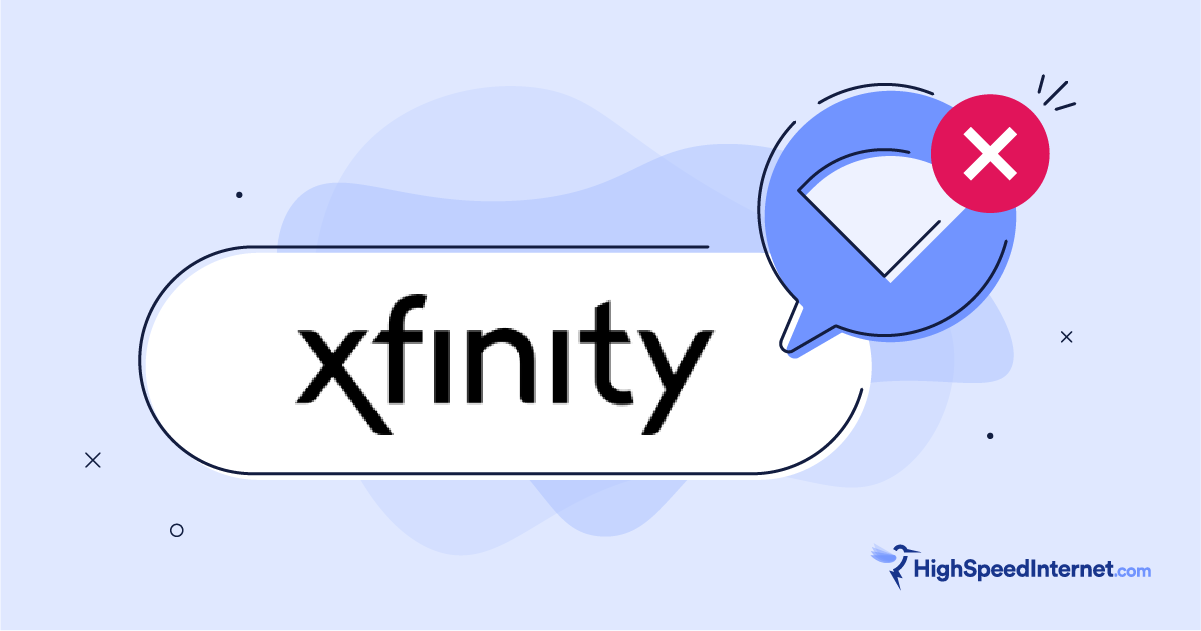How to Get Low-Income Internet through AT&T Access
Those losing Affordable Connectivity Program benefits can still get discounted internet through AT&T
Dec 23, 2025 | Share
Brand Guides, Low-Income
With the Affordable Connectivity Program (ACP) shut down for the foreseeable future, millions of Americans have lost the discounts that they relied on to balance their internet bill with their household budget. While there’s still a pressing need for a nationwide solution at the federal level, many ISPs are helping those affected with their own low-income internet programs.
AT&T customers can get financial assistance through the AT&T Access program , which has been helping people get affordable internet for a long time but was expanded during the COVID-19 pandemic. If this program sounds like it might work for you, we’ll walk you through the basics of how the program works and how you can apply.
What is the AT&T Access program?
The AT&T Access program provides low-cost home internet service to eligible households who participate in government programs such as the Supplemental Nutrition Assistance Program (SNAP) or the National School Lunch program (NSLP). Those with a household income below 200% of federal poverty guidelines are also eligible for the program.
Those who were enrolled in the ACP automatically qualified for the AT&T Access program and their bill was completely covered by the $30 ACP subsidy, giving them AT&T internet with no charge whatsoever. Although AT&T is continuing the Access program, the government subsidy ended in 2024, so those who use AT&T Access have to pay the $30 per month cost themselves.
Depending on your location, the AT&T Access program provides either a 100Mbps fiber connection or a 768kbps–100Mbps DSL connection. It also includes professional installation and a gateway or modem at no extra charge to you.
How to apply for the AT&T Access program
Eligibility for the AT&T Access program requires your household to meet one of the following criteria:
- A member of your household participates in the Supplemental Nutrition Assistance Program (SNAP) program.
- A member of your household participates in the National School Lunch Program (NSLP).
- You are a California resident, and a member of your household receives Supplemental Security Income (SSI).
- Your household income is 200% or less than the federal poverty guidelines.
You should also make sure that AT&T offers internet service in your area.
Do you know what internet options are available to you?
Enter your zip code below to find out what providers have coverage where you live.
When you apply online, you’ll need to make sure you have a copy of the paperwork that verifies your eligibility.
For SNAP, this would be a copy of your SNAP card and a government-issued ID that matches the name on the card.
For the NSLP, you’ll need a copy of the most recent document stating that your child is receiving free or reduced-price lunch as part of the program.
For SSI, you’ll need a copy of your original SSI benefits award letter or a current benefits verification letter with the recipient’s name on it.
And finally, for those with a household income at 200% or less than the federal poverty guidelines, you’ll have to submit a current copy of your SSA1099, W-2, or Social Security statement of benefits to verify your income.
As mentioned, you only need to meet one of these criteria to be eligible for AT&T Access, so if you meet more than one, just choose the option for which it’s easiest to find the necessary documentation.
Once you have your documentation in hand (preferably in a digital format), you can start the application process here .
What happens when the ACP ends?
April is currently the last fully-funded month of the ACP, during which those in the program will receive their full benefit. In May, participants will only receive a partial payment or $7–$16 toward their monthly internet bill, rather than the full $30. After May, no one in the program will receive any benefits unless Congress chooses to fund the program once again.
Once the program has ended, those on an ACP plan will lose internet service completely unless they opt-in to receiving undiscounted service from their provider. For those who got their ACP-subsidized internet through AT&T, the Access program isn’t going away, but you will have to opt-in to paying $30 for AT&T Access—you will not be automatically switched over to the paid plan.
To avoid an interruption in service, you must do the following:
- Acknowledge receiving the disclosures about the ACP ending
- Consent to receive internet service without the ACP discount
- Pay your full bill for the upcoming month
You can also choose to switch to a different provider, or cancel your connection entirely, though we’d suggest looking into other free and low-cost options first.
Other providers with low-income programs
One of the reasons that the ACP worked so well is that the program was nearly universal—all major internet providers participated in the program and had an incentive to tailor their own plans to work better with the subsidy it provided. Many ISPs have stepped up to fill the gap left by the end of the ACP, but while their requirements and benefits are similar, there’s some important differences between these programs.
If AT&T plans no longer fit your budget without the ACP benefit, here are some other internet providers with affordable internet plans:
Alternatives to the ACP
The ACP has been one of the most effective and efficient programs for expanding internet access in low-income communities but, fortunately, it’s not the only one. One of the easiest ways to transition away from the ACP is to enroll in another government program.
The other major government program for internet assistance is the Lifeline program. The Lifeline program works similarly to the ACP, but has stricter eligibility requirements and offers a smaller benefit. Not all ACP participants will qualify for Lifeline, but if you qualified for the ACP through one of these programs, you likely qualify for the Lifeline program as well:
- Supplemental Nutrition Assistance Program (SNAP)
- Supplemental Security Income (SSI)
- Veterans Pension and Survivors Benefits
- Federal Public Housing Assistance (FPHA)
- Medicaid
- Tribal Programs for Native Americans
Lifeline also offers benefits based on income, but the threshold for Lifeline is 135% of the federal poverty guideline, rather than the 200% needed for the ACP. To check your eligibility for the program, visit the Lifeline website.
If you qualify for both the AT&T Access program and the Lifeline program, you can enroll in both. Unlike the ACP, the Lifeline won’t cover the full $30 monthly cost for AT&T Access, but it will provide some support to lower the amount you’re paying even further.
Other providers with low-income programs
One of the reasons that the ACP worked so well is that the program was nearly universal—all major internet providers participated in the program and had an incentive to tailor their own plans to work better with the subsidy it provided. This meant that the eligibility requirements and the application process were the same, whether you had Verizon internet in New Jersey or Frontier internet in California.
Many ISPs have stepped up to fill the gap left by the end of the ACP, but while their requirements and benefits are similar, there’s some important differences between these programs.
Do you know what internet providers offer service in your area?
Enter your information below to find the provider in your area that best meets your needs.
Other low-cost options from AT&T
If you don’t meet the requirements for the AT&T Access program or you simply need a plan with more speed, don’t worry. AT&T has a lot of other affordable options to choose from.
Low-cost AT&T plans
| Package | Price | Speed | Connection type | Order online |
|---|---|---|---|---|
| Internet 100 | $45/mo.† | 100Mbps | Fiber | |
| Internet 300 | $55/mo.* | 300Mbps | Fiber | |
| Internet 500 | $65/mo.* | 500Mbps | Fiber | |
| Internet 1000 | $80/mo.† | 1,000Mbps | Fiber | |
| Internet 2000 | $125/mo.† | 2,000Mbps | Fiber | |
| Internet 5000 | $155/mo.† | 5,000Mbps | Fiber | |
| Internet Air | $60/mo.‡ | 300Mbps | Fixed wireless/5G | See Plans |
Data as of 12/23/2025. Offers and availability may vary by location and are subject to change.
* Price after $5/mo Autopay & Paperless bill discount (w/in 2 bills). Plus taxes & fees. Monthly State Cost Recovery Charge in TX, OH, NV applies. One time install chrg may apply. Ltd. avail/areas. Call or go to www.fiber.att.com to see if you qualify.
† Price after $10/mo Autopay & Paperless bill discount (w/in 2 bills). Plus taxes & fees. Monthly State Cost Recovery Charge in TX, OH, NV applies. Ltd. availability/areas.
‡ $60/mo after $5 discount when enrolled in Autopay. Paperless billing req’d. Not available in NY. Monthly State Cost Recovery Charge in TX, OH, NV applies. . Service subj. to Internet Terms of Service at att.com/internet-terms. Offers may be modified, or discontinued, at any time without notice. Other conditions may apply to all offers. Speeds based on wired connection. Actual speeds may vary. For more info, go to www.att.com/speed101.
Additional resources
If you’d like to learn more about low-income programs and other ways to find affordable internet, there are lots of other articles on HighSpeedInternet.com to help you learn about the topic.
- Government Programs To Make Internet Service More Affordable
- How To Get Free and Low-Cost Internet
- Best Internet Deals
- Best Internet Plans and Discounts for Seniors
- Best Internet Plans and Discounts for Students
- Best Internet for Veterans and Military Families
- Rural Internet Providers
- The End of the ACP
Author - Peter Christiansen
Peter Christiansen writes about telecom policy, communications infrastructure, satellite internet, and rural connectivity for HighSpeedInternet.com. Peter holds a PhD in communication from the University of Utah and has been working in tech for over 15 years as a computer programmer, game developer, filmmaker, and writer. His writing has been praised by outlets like Wired, Digital Humanities Now, and the New Statesman.
Editor - Jessica Brooksby
Jessica loves bringing her passion for the written word and her love of tech into one space at HighSpeedInternet.com. She works with the team’s writers to revise strong, user-focused content so every reader can find the tech that works for them. Jessica has a bachelor’s degree in English from Utah Valley University and seven years of creative and editorial experience. Outside of work, she spends her time gaming, reading, painting, and buying an excessive amount of Legend of Zelda merchandise.




